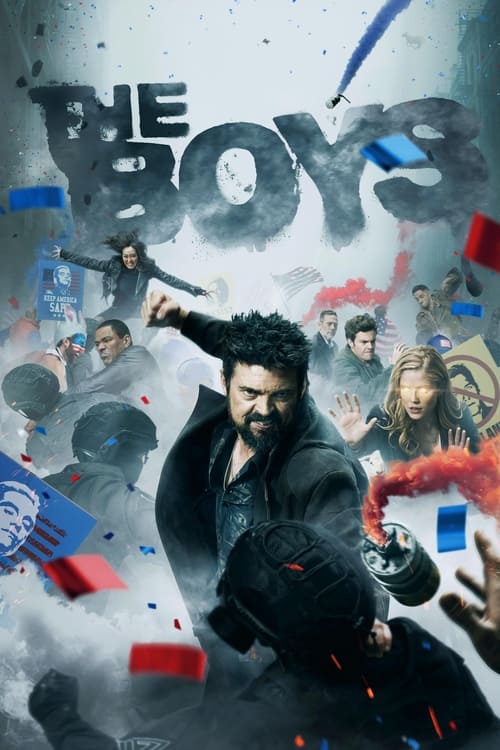
Ask Your Own Question
What is the plot?
In "Histories & Lore: House Clegane," the episode begins with a narration that introduces House Clegane, detailing their origins and the significance of their house sigil, which features a fierce hound. The narrator explains that the Cleganes are known for their brutish strength and loyalty, particularly to House Lannister, setting the stage for the family's tumultuous history.
The story unfolds with the introduction of the Clegane brothers, Sandor and Gregor. Sandor, known as the Hound, is depicted as a fierce warrior with a scarred face, a result of a childhood incident involving his brother Gregor, the Mountain. The narration describes how Gregor, in a fit of rage, pushed Sandor's face into a fire, leaving him with deep scars and a lifelong fear of fire. This traumatic event shapes Sandor's character, instilling in him a sense of bitterness and resentment towards his brother.
As the narrative progresses, it highlights the contrasting personalities of the two brothers. Sandor is portrayed as a complex character, often conflicted between his brutal nature and a hidden sense of honor. In contrast, Gregor is depicted as a monstrous figure, embodying pure violence and cruelty. The episode recounts various brutal acts committed by Gregor, including his infamous reputation as a knight who revels in bloodshed and terror, further establishing the fear he instills in others.
The episode also delves into the relationship between the Cleganes and the Lannisters. It describes how the Cleganes serve House Lannister, with Gregor often acting as a tool of their will, carrying out their dirty work without question. This loyalty is explored through scenes that depict Gregor's ruthless enforcement of the Lannisters' commands, showcasing his willingness to commit heinous acts for power and status.
The narrative then shifts to the infamous trial by combat, where Sandor faces off against Gregor. The tension builds as the brothers' long-standing rivalry culminates in a brutal confrontation. The episode vividly describes the fight, detailing the ferocity of their battle, the clashing of swords, and the visceral brutality of their movements. Sandor's internal struggle is highlighted as he fights not only against Gregor but also against the memories of their shared past.
As the fight progresses, Sandor's motivations become clear; he seeks not only to defeat his brother but also to reclaim a sense of agency and confront the trauma of his childhood. The episode captures the emotional weight of this confrontation, illustrating Sandor's determination to overcome the shadow of Gregor's cruelty.
The climax of the episode centers on the moment when Sandor finally gains the upper hand. In a decisive move, he manages to overpower Gregor, showcasing his skill and resilience. The narration emphasizes the significance of this victory, not just as a physical triumph but as a symbolic reclaiming of Sandor's identity and a confrontation of his past.
The episode concludes with a reflection on the legacy of House Clegane. It highlights the enduring impact of the brothers' rivalry and the dark legacy they leave behind. The narrator emphasizes that the Cleganes, despite their brutality, are a part of the larger tapestry of Westeros, their story intertwined with the fates of many other houses. The final scenes evoke a sense of lingering tension, leaving viewers with a haunting reminder of the violence and complexity that define the Clegane legacy.
What is the ending?
In the episode "Histories & Lore: House Clegane," the narrative focuses on the history and legacy of House Clegane, particularly the infamous brothers Sandor and Gregor Clegane. The episode concludes with a reflection on their brutal and violent lives, emphasizing the stark contrast between the two brothers and their fates.
As the episode unfolds, it begins with a recounting of the origins of House Clegane, detailing how the family rose from humble beginnings. The story highlights the brutal nature of Gregor Clegane, known as "The Mountain," who is depicted as a monstrous figure, both physically and morally. His violent tendencies are showcased through various anecdotes, illustrating his ruthless behavior and the fear he instills in others.
In contrast, Sandor Clegane, known as "The Hound," is portrayed with more complexity. The narrative delves into his troubled past, including the trauma he experienced as a child, particularly the scars he bears from his brother's cruelty. Sandor's internal conflict is evident as he grapples with his identity, often oscillating between his violent nature and a desire for redemption.
The episode culminates in a reflection on the brothers' ultimate fates. Gregor, after being mortally wounded, is resurrected as a monstrous figure, serving as a tool of destruction for the Lannisters. His transformation into a near-unrecognizable creature symbolizes the loss of humanity and the depths of his brutality. Sandor, on the other hand, faces his own demons and ultimately seeks a path away from violence, hinting at a potential for redemption, even as he remains haunted by his past.
The episode closes with a somber acknowledgment of the Clegane legacy, marked by violence, fear, and the struggle for identity, leaving viewers with a poignant reflection on the nature of power and the consequences of a life steeped in brutality.
Is there a post-credit scene?
In the episode "Histories & Lore: House Clegane" from the "Game of Thrones" specials, there is no post-credit scene. The episode focuses on the history and lore surrounding House Clegane, detailing the brutal and violent legacy of the family, particularly the infamous Sandor Clegane, known as the Hound, and his brother Gregor Clegane, the Mountain. The narrative explores their childhood, the origins of their enmity, and the impact of their actions on the world of Westeros. The episode concludes without any additional scenes or content after the main feature.
What is the origin of the Clegane family in Game of Thrones?
The Clegane family is known for their brutal and violent history, originating from the Westerlands. They were originally the sworn bannermen to House Lannister, and their rise to prominence began with the first Clegane, who was a simple blacksmith. His son, Sandor Clegane, known as 'The Hound,' and his brother, Gregor Clegane, known as 'The Mountain,' both embody the family's legacy of strength and brutality.
How did Sandor Clegane earn the nickname 'The Hound'?
Sandor Clegane earned the nickname 'The Hound' due to his fierce loyalty to House Lannister and his role as a brutal enforcer. The name also reflects his aggressive nature and his willingness to hunt down enemies, much like a hound would. His scarred face, a result of a childhood incident involving his brother Gregor, adds to his fearsome reputation.
What is the relationship between Sandor and Gregor Clegane?
The relationship between Sandor and Gregor Clegane is deeply troubled and marked by violence. Gregor, the elder brother, is a sadistic and monstrous figure who bullied Sandor during their childhood, leading to a lifelong resentment. This dynamic shapes Sandor's character, as he struggles with his own identity and the shadow of his brother's brutality.
What role does House Clegane play in the larger conflicts of Westeros?
House Clegane plays a significant role in the conflicts of Westeros, particularly through the actions of Gregor Clegane, who serves as a key enforcer for House Lannister. His brutal tactics and loyalty to Tywin Lannister make him a feared figure in the War of the Five Kings, while Sandor's internal conflict and eventual disillusionment with the Lannisters highlight the complexities of loyalty and honor in the series.
What are the key traits that define Sandor Clegane's character throughout the series?
Sandor Clegane is defined by his fierce independence, deep-seated anger, and a complex moral code. Despite his violent nature, he exhibits moments of compassion, particularly towards Sansa Stark and Arya Stark, revealing a more vulnerable side. His disdain for knights and chivalry, coupled with his struggle for redemption, makes him one of the more nuanced characters in the series.
Is this family friendly?
The episode "Histories & Lore: House Clegane" from Game of Thrones delves into the dark and violent history of House Clegane, which may not be suitable for children or sensitive viewers. Here are some potentially objectionable aspects:
-
Violence and Brutality: The Clegane family is associated with themes of violence, including references to brutal fights and the nature of their character, particularly Sandor Clegane (the Hound).
-
Themes of Abuse: The backstory includes elements of abuse, particularly regarding the relationship between the Clegane brothers, which may be distressing.
-
Death and Mortality: Discussions of death, particularly in the context of the violent world of Westeros, are prevalent and may be unsettling.
-
Dark Family Dynamics: The episode explores complex and often dark family relationships, which could be emotionally heavy for younger viewers.
-
Graphic Imagery: While the episode is animated, the themes and visuals may still evoke the harsh realities of the world, which can be intense.
Overall, the content may be more appropriate for older teens and adults due to its mature themes and emotional weight.
























